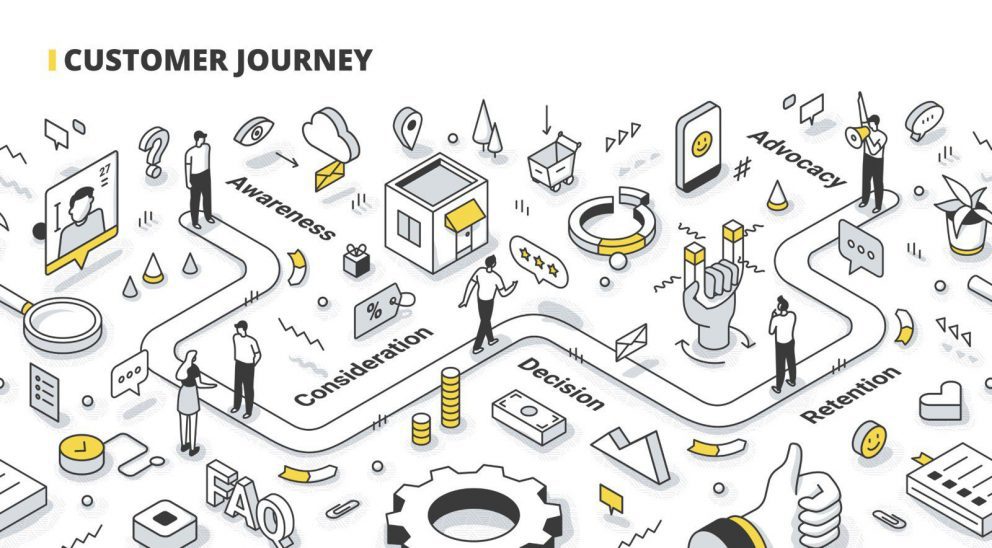How to Create a Well-Rounded Campaign Plan

By Michelle Voznyuk, Marketing Specialist at Heinz Marketing
As we finish out the rest of the year strong, there’s still time to get a new campaign off the ground. Maybe you’ve been thinking about adopting a new strategy for a while? Or maybe you haven’t seen the results you hoped for from your campaign efforts? Wherever you find yourself, we want to help.
When you think about creating a whole new campaign from scratch, you might feel a little overwhelmed. But with the right strategy, you can develop a well-rounded campaign plan that will help you drive predictable pipeline.
Here are some steps you can take to get you on the right path:
Step 1: Determine Your Focus
To start, you should determine your focus. By this point, you should already have a pretty good sense of who you’re targeting. You should have a clearly defined Ideal Customer Profile or targeted list of accounts. From there, you can decide if you want to target a smaller subset of that list, specifically for campaign efforts.
For example, maybe you work in the construction industry and target contractors and architects. Do you want to create a more generalized campaign that can capture both audiences? Or do you prefer choosing one so you can create more targeted messaging?
You can also think about narrowing your campaign based on a specific product or service. The same question applies – do you want to target all of these areas of your business? Or do you want to focus on one? The answer might be both! Maybe you start your campaign at a high level and after a few weeks decide you want to get more targeted, or vice-versa. Anything goes!
Step 2: Define Your Business Goals
Next, you’ll want to define your business goals. The worst thing you can do is try to develop a campaign plan with no real sense of what you’re trying to accomplish. You should plan out what your campaign metrics will entail and measure how the campaign will contribute to those goals.
Not only will business goals help give you something to strive for, but they should also inform which channels and tactics you should use to make them happen.
Some bigger things you should track are:
- Revenue (in dollars)
- Pipeline (in dollars and/or opportunities)
- MQLs
Take your time on these, as they’ll become the foundation of your campaign.
Step 3: Create a Campaign Theme
Once you’ve identified your business goals, it’s time to create a campaign theme. Hopefully, you have some strong messaging already in place that can help you on your way. Based on your area of focus, I suggest creating an overarching theme first (between 1-2 sentences) that grabs attention at a high level. Next, explain in further detail below (about 3-5 paragraphs).
In this section, you should pull in different challenge and benefits messages that will resonate with your audience. Remember: it’s a two way street. Your prospects don’t want to feel they’re being talked “at”. They want to feel you understand what they’re experiencing and can help them create solutions to their problems.
Step 4: Develop Campaign Messaging
After you’ve developed your campaign theme, you should determine which messaging points will drive the campaign. These messages should be persona-specific and should identify what pain points your audience is experiencing, and explain how your product/service is going to directly help solve them. This will be key in developing your copy down the road.
Step 5: Select Your Content and Offers
Next, you should select the content and offers you want to use in your campaign. Depending on how much emphasis you’ve put on your content to date, you may or may not need to develop new assets to support your efforts. If you do decide you need to create some new content, you may want to focus on repurposing what you have first. This will cut down the amount of work needed, as well as the time it’s going to take to produce it. Keep in mind that you’ll probably need some time in between when the campaign plan is completed and execution.
In my experience, you’ll probably have some combination of old, new, and repurposed content ideas. These should span a variety of topics (within your theme), formats, and funnel stages.
Step 6: Identify Your Channels and Tactics
After you’ve determined your content and offers, you can start identifying your channels and tactics. How will you engage with your target audience?
Here are a list of some common channels you can use in your campaign:
- Email marketing
- Content marketing
- Digital marketing
- Event marketing
- Sales enablement
Within these channels, you can use tactics like:
- Email nurture programs
- Content syndication
- Content hubs
- Retargeting
- Direct mail
- Paid social
- Organic social
- Paid ads
- Webinars
- Sponsorships
- 1:1 outreach
Some of these may require tools you don’t already have in your tech stack. Depending on your resources, there may be some workarounds. For example – direct mail. Maybe you don’t have a direct mail platform you use, but your marketing team has the ability to send out gifts manually.
Don’t forget: when selecting these channels and tactics, get creative and be strategic! If what you’ve been doing in the past isn’t working, it’s probably time to switch it up. It shouldn’t be a matter of rinse and repeat – in a time where it’s incredibly hard to break through the noise, you need to find ways to stand out!
Step 7: Build Out a Schedule
Woohoo! You’ve made it to the last step – building out a schedule. Start by determining how long you plan to run your campaign and when you can expect it to launch. As previously mentioned, you might need time to develop new content before you can get things going. Take into consideration how many resources you have on deck to develop individual strategy briefs, write copy, and build and test in any tools beforehand. And if sales is involved in any part of your campaign, you’ll want to make sure they’re on board first.
From here, I suggest creating a week by week schedule that shows which channels and tactics you’ve selected with run times for each. You should also list which offers will be used at what times. Maybe you’re running 3 ads with 3 different offers for the entirety of the campaign. Or Maybe you have a nurture program that runs for 10 weeks with a combination of webinar invites and content assets. All of that should be explicitly defined in your schedule, which will act as your source of truth.
That being said – life happens! Unexpected deliverables come up and things have to get shifted. So don’t be too hard on yourself if the campaign plan doesn’t follow the exact schedule you laid out. You can always make adjustments along the way.
Like you, we are always learning – marketing is a work in progress! But I hope you found these tips helpful as you continue building out your campaigns this year and beyond. Happy planning!






